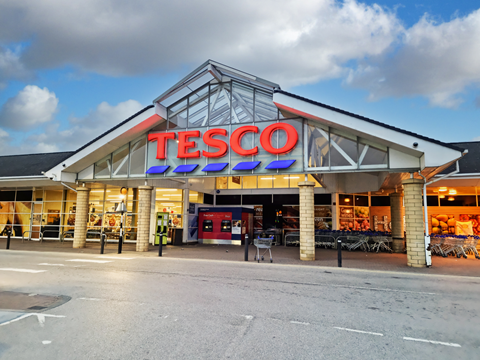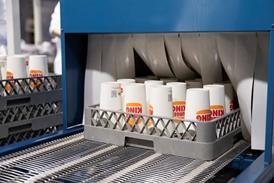
As part of an expanded pilot, Tesco is now trialling barcodes containing GS1 QR codes in selected stores, seeking to assess how the QR codes can improve date code accuracy, reduce food waste and help prevent the sale of out-of-date products.
The pilot replaces traditional barcodes on 12 own-brand meat and produce lines in a small number of locations across southern England. Developed in collaboration with GS1 UK and ten supplier partners, the initiative is primarily focused on capturing use-by dates and batch numbers.
The QR codes powered by GS1 provide a unique digital identity for each product. Apparently, they carry more information than the original barcode said to allow ‘instant access’ to accurate, real-time data from the supply chain to the shelf. The trial centres on core operational data and aims to lay the foundation for future use cases such as linking to allergen information, sourcing and sustainability credentials and recycling guidance.
“While it’s still early days, we’re already seeing the benefits of connecting our products to dynamic digital information that will help customers to know more about the products on our shelves,” said Isabela De Pedro, supply chain development & change director at Tesco. “As well as improving the customer experience and unlocking new supply chain value, we are testing how QR codes can help Tesco with issues including traceability, compliance, sustainability and shelf-edge communication.”
The global ambition is for all point-of-sale systems to be capable of scanning QR codes powered by GS1 by the end of 2027, in parallel with existing barcodes.
In related news, in March GS1 UK and FT Longitude shared their report involving 500 senior retail industry executives. Commissioned by GS1 UK to understand the trends, challenges and priorities facing the retail industry, the findings included 92% of industry executives’ belief that there will be no retail transformation without a unified approach to data and transparency.
As part of our Innovation Spotlight series Stephen Gryczka, director of strategy and corporate development at Markem-Imaje, explained how manufacturers can utilize the GS1 Digital Link barcode to improve production efficiency and profitability. Gryczka highlighted that manufacturers can store information such as material origins, expiration dates, inspection outcomes and component specifics, responding to consumer demands for transparency.
If you liked this story, you might also enjoy:
The ultimate guide to the Packaging and Packaging Waste Regulation in 2025
How are the top brands progressing on packaging sustainability?
Everything you need to know about global packaging sustainability regulation in 2025
The key to increasing the use of reusable packaging in supermarkets


















No comments yet